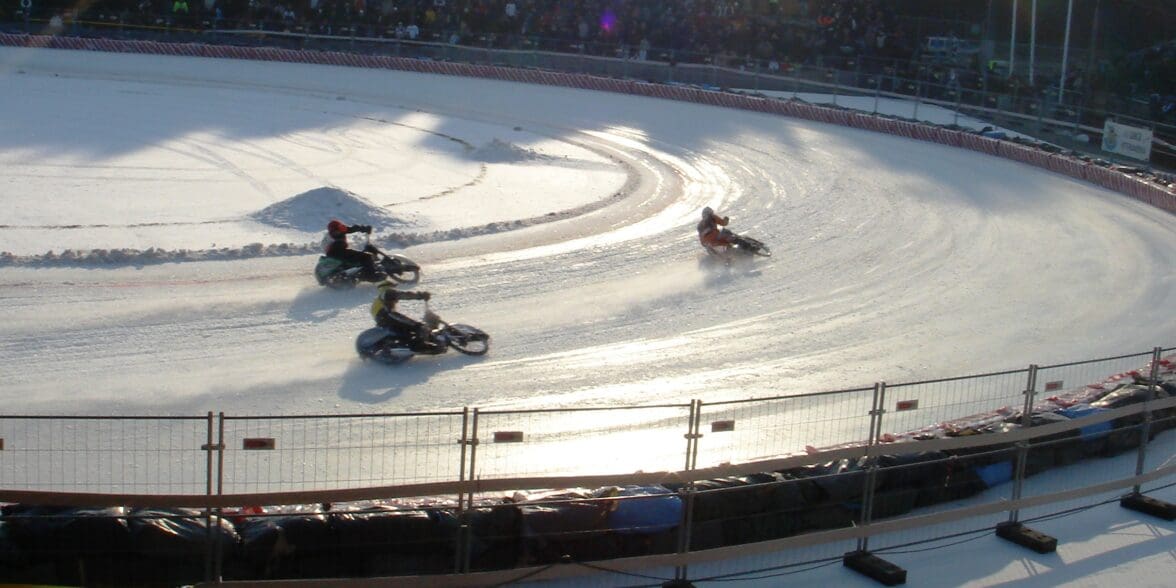If you’re a child of the ’70s and ’80s like me, your first experience of motorcycle ice racing will probably be a lot like mine. The first time I ever contemplated the idea of motorcycles having bloody great spikes in their tyres was when I saw Roger Moore in the James Bond movie “For Your Eyes Only” in or around 1981. Being the motor-obsessed, Mad Max fanboy kid I was, the idea instantly appealed to me. And there’s little doubt my interest had nothing to do with grip or cornering; like setting a guitar on fire or jumping a car over a river, it just seemed wantonly, aggressively cool.
But little did I know that it wasn’t just some crazy idea dreamed up by the James Bond scriptwriters. Turns out they were just pillaging the idea from an honest-to-goodness real life sport, with real riders and real bikes to boot. That sport is called ice racing or “Ice Speedway” and it’s probably the world’s most arcane form of motorcycle racing.
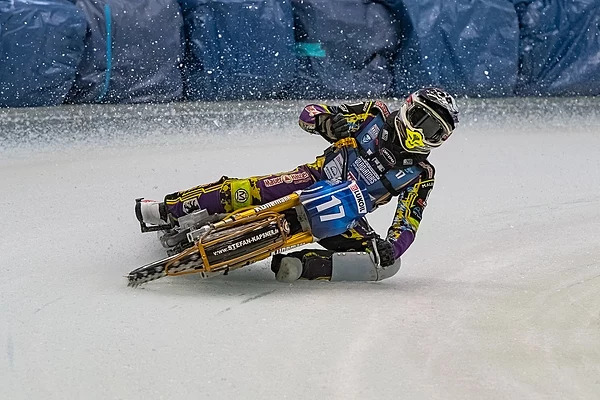
The Olden Days of Motorcycle Ice Racing
The fine art of speedway racing is almost as old as motorcycling itself, thanks in large part to the fact that it happens away from public roads. In fact, all you really need for a speedway race is an open field and a bunch of riders silly enough to want to go sideways at speed within inches of each other.
The first race ever held was in West Maitland, New South Wales, Australia in November of 1923. And while it’s not an issue down here, anyone who gets a taste for this style of moto combat will quickly realise come winter that regular motorcycle tyres–even if they are designed for off road riding–are of little use once the snow starts falling for real.
And while there were ragtag groups of bikes with studded tyres racing on ice for decades beforehand, it wasn’t until the mid 1970s that the idea of a formal speedway race on ice was proposed in the west. The absolute legend who figured out the whole idea was a Michigan resident by the name of Staten Lorenz. The fact that his name sounds like a German Financial Institution notwithstanding, he was the first guy in the US with the guts to screw these slasher movie-esque spikes into a motorcycle tyre and give the whole crazy notion a red hot go. And so a technology to ensure that formal speedway races could be held all year ’round was made real.
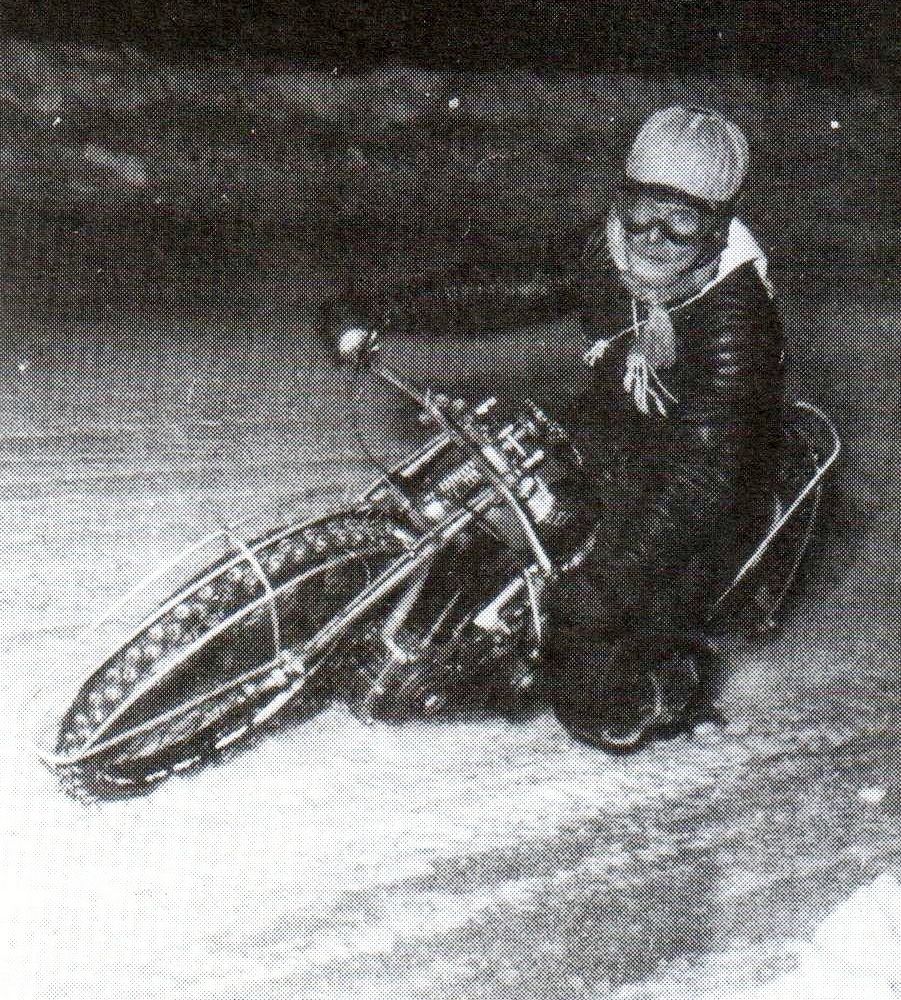
Ice Racing: Big in Europe
Of course, it’s not just the Americans who have proper winters and a love for motorcycle racing. Hello Europe, if you’re listening. And with a pre-existing speedway fanbase ready and waiting, it’s little wonder that Russia, Sweden, Finland, the Czech Republic, Germany and the Netherlands all put their hands up to try what’s often described as requiring the bravest and/or the craziest of all motorcycle riders. There’s little mystery as to why that is. Hot tip: it’s the flesh-tearing spikes.
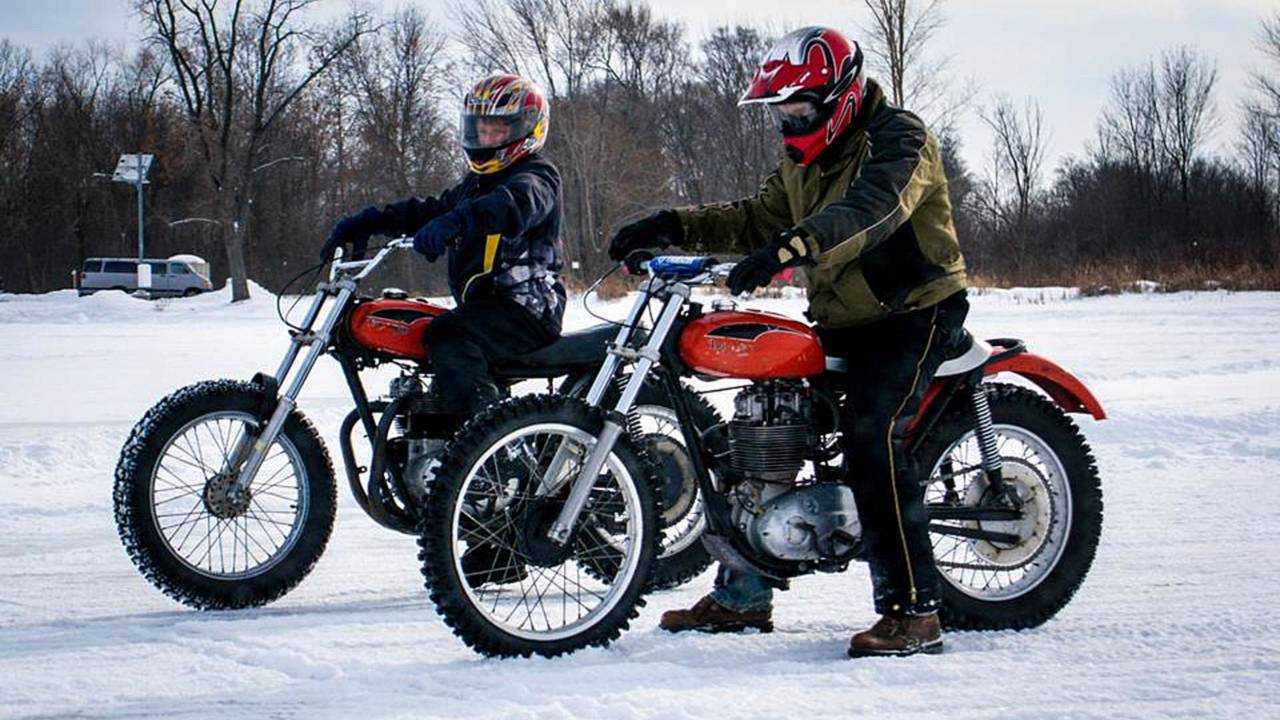
With around 140 spikes on the front wheel and an eye watering 190 on the rear, the bikes themselves closely resemble the brakeless, nitro-burning speedway bikes they descended from—with the exception of a tweaked frame, the aforementioned spikes, and protective fenders somewhat similar to the safety guards you’ll find on your common or garden variety circular saws.
You’d think that’d provide ample warning to the bike’s pilots as to just how dangerous the sport can be, but still they seem to persist. It’s also important to note that ice racers have two gears as opposed to the regular speedway bike’s single cog.
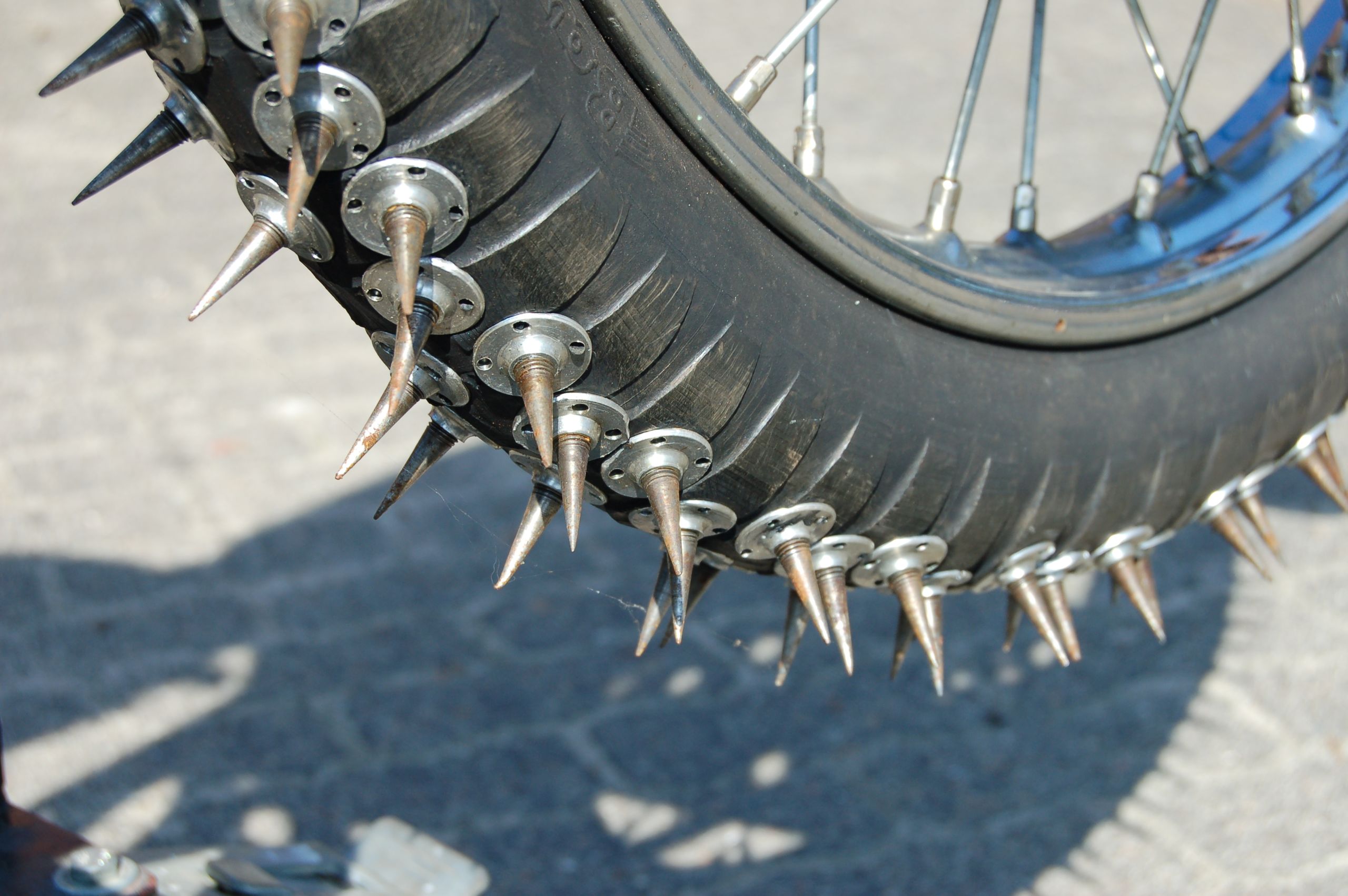
Get a Grip
Ice racing is also conducted with bikes that don’t have the spikes, but we’ll focus on the more dangerous, spiked tyre options for now. And while the original intention of adding the spikes was likely to increase the bike’s traction on the ice to a level that wasn’t overly dangerous, I think it’d probably be fair to say that at some point in the distant past, decent traction was reached and subsequently overshot by a very healthy margin.
What do I mean by that? Well, modern bikes have gained the ability to lean at such extreme angles that the bike’s bar-end grips can drag along the ice. And you thought Marc Marquez was doing well by getting his elbow down? Think again.
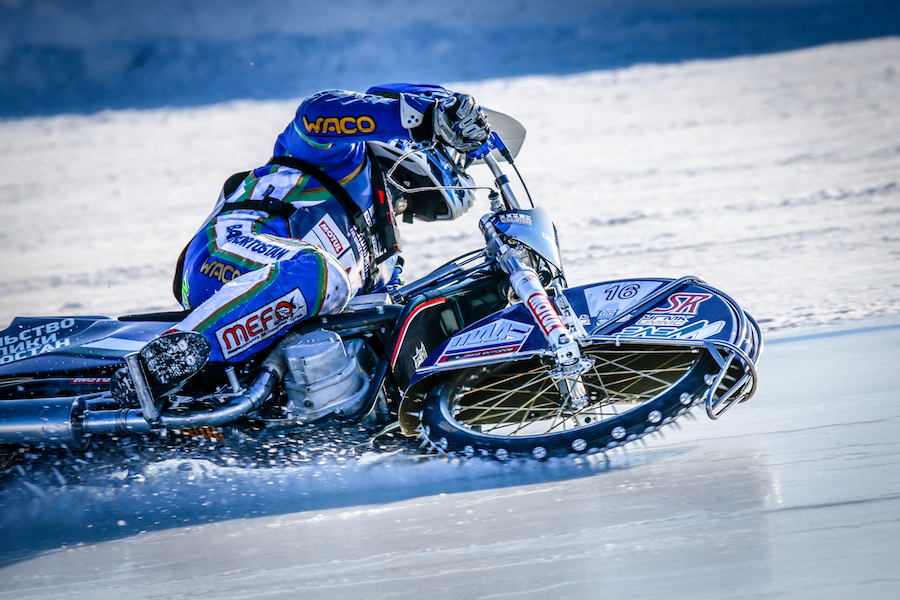
As you can imagine, racing bikes like this on ice will tend to make a rather big mess of the stuff. Not a problem if you’re racing on a frozen lake where you can just relocate the track once you’ve made the world’s biggest slushy, but if you are racing indoors on a purpose-built track, in front of an audience, you’ll want to minimise the damage you do to the ice so that you can fit as many races as possible in without the tail end riders losing out.
To this end, the community and its governing body standardised the spikes to strike the best balance between grip and track wear. The latest generation of spikes, approved in 1991, are called “Silver Rockets Racing Studs” and are so effective at their job that they’ve been kept unchanged ever since.
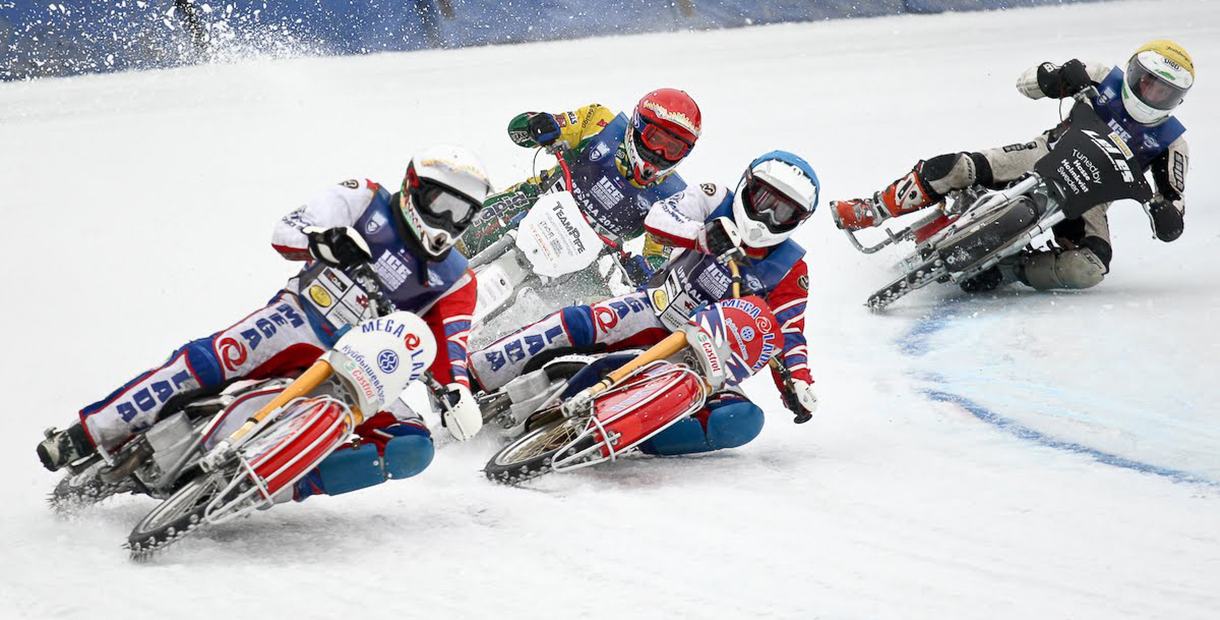
Ice to Meet You
Interestingly, while the spikes are standardised, their tyres and construction aren’t. This leads to teams developing bespoke tyre recipes that involve their own rubber, spike placement and adjustment, and the inclusion of additional “liner” tyres inside the bike’s regular rubber. In essence, this allows teams to install spikes with longer internal shanks, which in turn gives the spikes more rigidity and bite on the ice.
At first these liners were just bicycle and street motorcycle tyres that were placed inside the spiked racing tyres, but as the practice was refined and the benefits discovered, they have largely been replaced by manufactured liners made especially for the job.
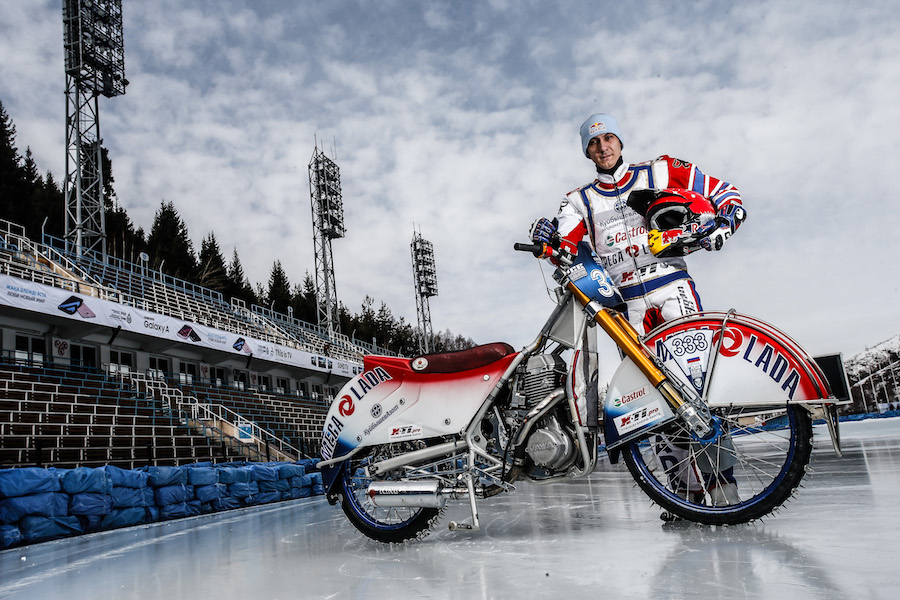


Naturally, with only left-hand turns to contend with, the spikes are arranged on the centre and left-hand side of the bike styres in varying configurations that are largely dependent on the rider’s preferences, riding style, and what has worked for them and the team in the past. As you can see from some of the pictures here, the lean angles these riders can get is nothing short of incredible. Left-hand knee protectors seem to be used as much for sliding and resting a cornering bike on as they are for protection.
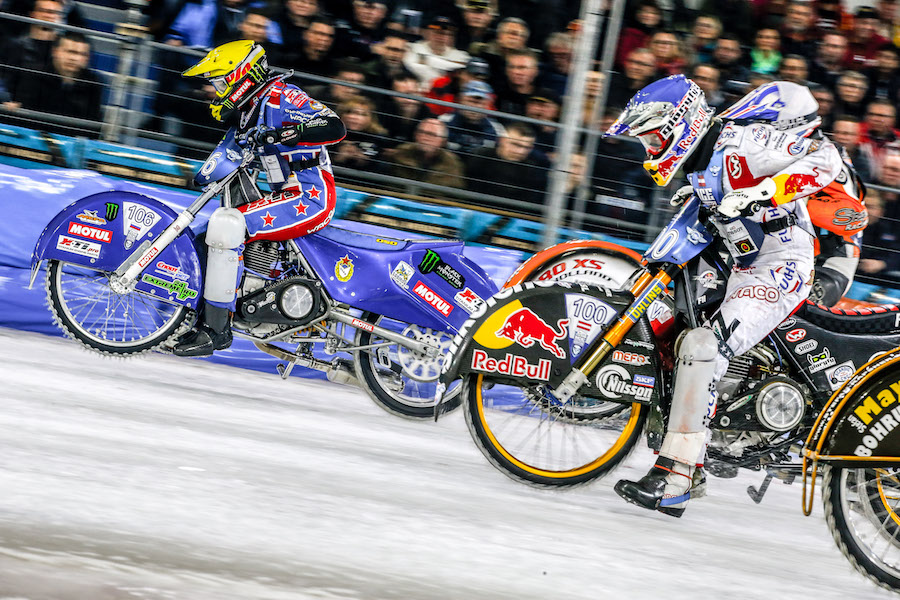


Fire and Ice: Engines Used in Motorcycle Ice Racing
The world champs will use a 500cc engine in their bikes, but other classes allow for 125, 250, 350, and 450 ccs. Other requirements stipulate a two-valve engine, a gearbox with two speeds, and a maximum fuel tank capacity of four litres filled to the brim with delicious methanol.
Engine compression can be as high as 15:1. With around 80hp on tap and enough traction to climb up a wall and across the ceiling, your average ice racing bike will out-accelerate an F1 car and top out at around 80mph.
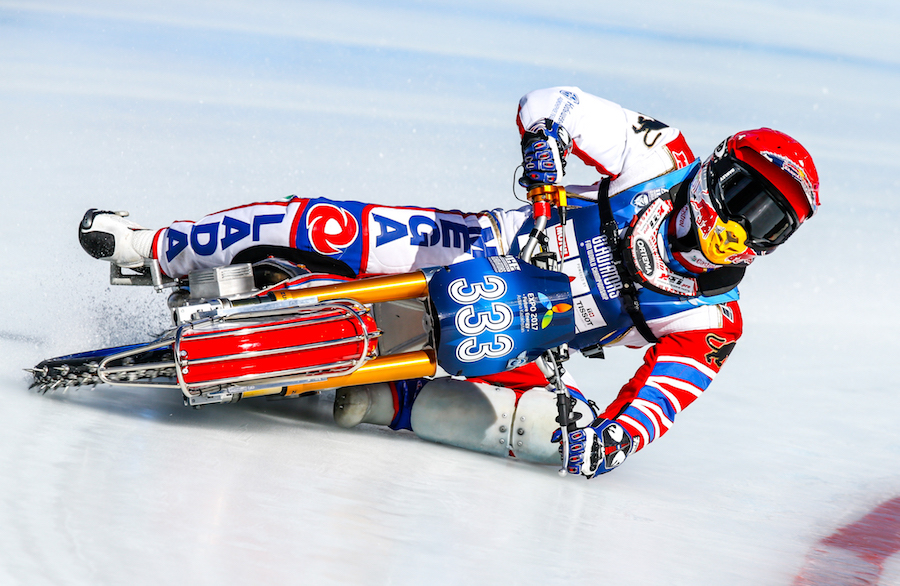


So there you have it. Ice racing in a nutshell—or should that be a paper cone with syrup? New business ideas aside, any true moto racing fan in the Northern Hemisphere should probably try and get along to a race once in their life. I can guarantee you won’t regret it.


